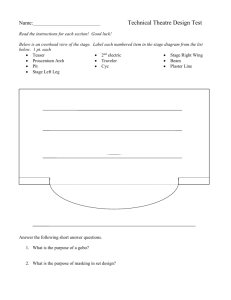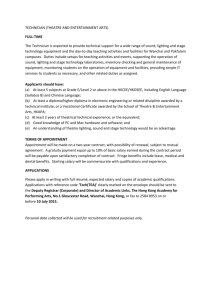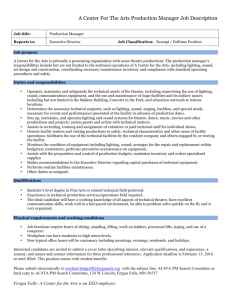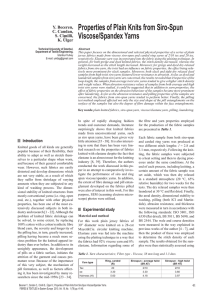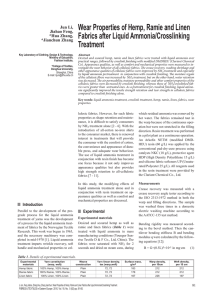Visual Arts Overview - The UAIS Extended Essay and Research Site
advertisement
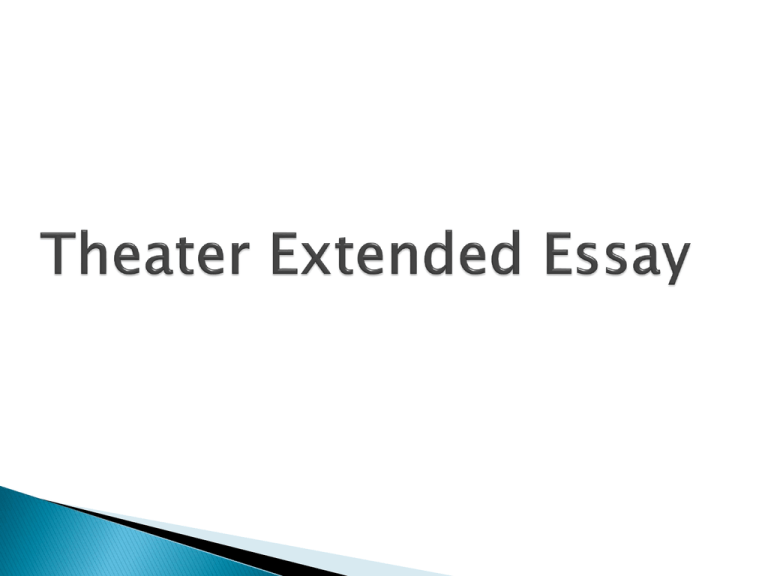
An extended essay in theatre provides students with an opportunity: ◦ to undertake independent research into a topic of their choice ◦ to apply a range of skills in order to develop and explore a focused research question appropriate to theatre in an imaginative and critical way ◦ to test and validate their research by considering its effect on the practice of the investigated theatre form. The use of appropriate theatrical sources that encourages the application of relevant theatrical concepts, theories or ideas. Absolute reliance on textbooks and web sites is discouraged. Sources should be consulted in conjunction with other relevant research material as support material for the student's own original research. not be too broad as such essays are rarely successful have a research question that is well focused, thus encouraging analysis in depth rather than breadth. The emphasis of the extended essay should always be on written analysis, interpretation, evaluation, and the construction and development of a sound argument. An investigation into the functions of mask in two of Zeami Motokiyo’s Noh Female stereotypes and their performance in a selection of Brecht’s plays. An examination of Soyinka’s use of rhythm in acting, based on an in-depth exploration of one Soyinka’s plays. A study of the effects of the use of fabrics and lighting in The Tempest. A study on the use of fans in Restoration comedy. Topic ◦ A study of the effects of the use of fabrics and lighting in The Tempest Research Question ◦ How can fabrics and lighting contribute to the creation of magical effects in a production of Shakespeare's last play? Approach ◦ In-depth research is carried out into the use of fabrics (in furnishing and costuming) and lighting in previous productions of The Tempest. There is a discussion, based on these examples, of how fabrics and lighting work with other production elements, how they can contribute to the creation of magical effects and how these affect the readings of the play. The way that appropriate/inappropriate use of both can affect how a production is examined. Primary and secondary data: ◦ Books, newspapers and magazines, interviews, and Internet web sites The use of other materials: ◦ Sketches, drawings, pictures, plans, photographs, CDs and DVDs Sources should support ideas, opinions and assertions Evidence that supports your topic, research question, and analysis



